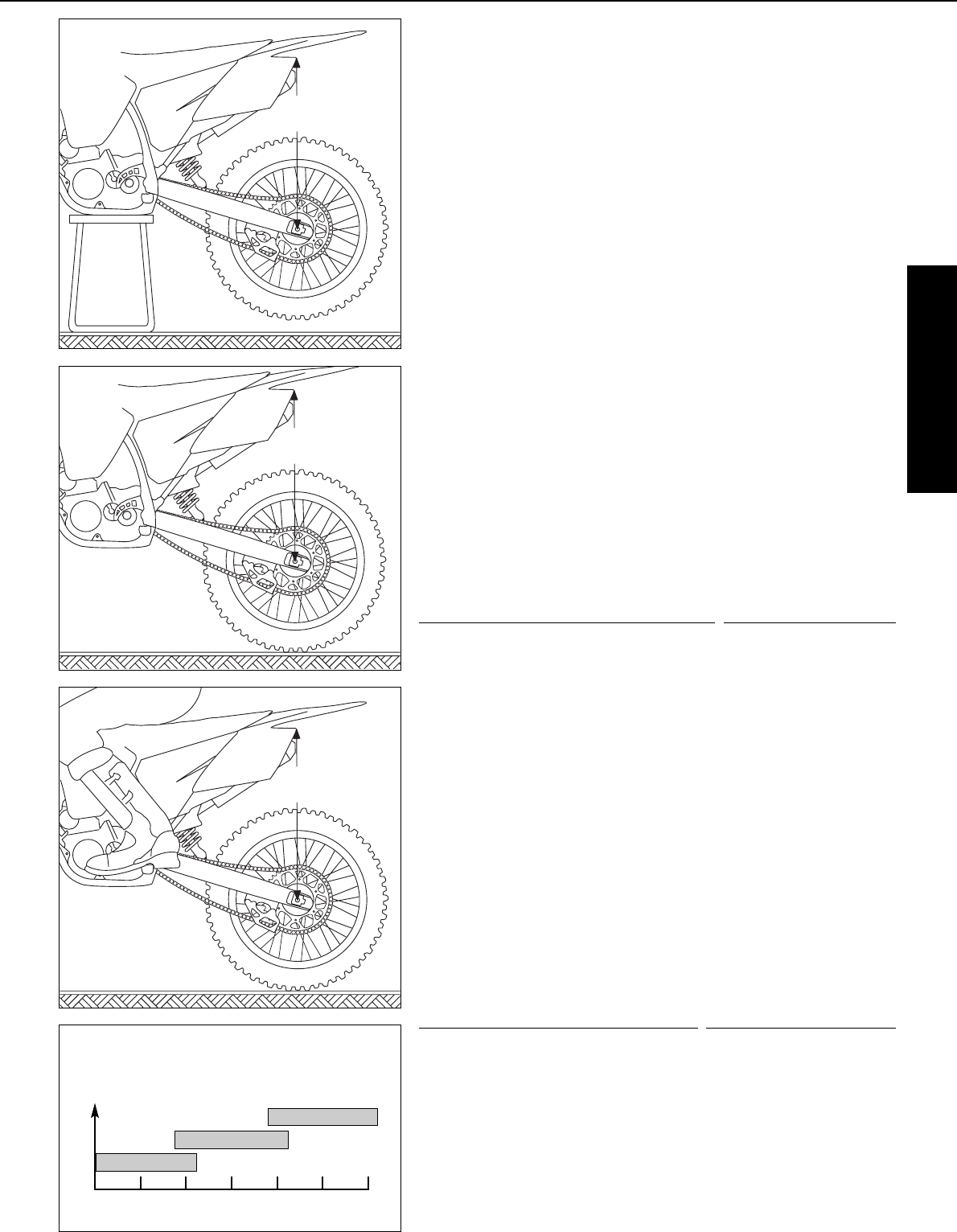
ENGLISH
25
MAINTENANCE WORK ON CHASSIS AND ENGINE
»
Basic suspension setup for the weight of the driver
To achieve maximum handling performance and to prevent the fork, shock
absorber, swing arm and frame from being damaged, the basic setup of the
suspension components must be suitable for your weight. At delivery, KTM's
offroad motorcycles are set to accommodate a driver weighing 75 bis 85 kg
(wearing full protective clothing). If your weight exceeds or falls short of this
range, you will need to adjust the basic setup for the suspension components
accordingly. Minor deviations in weight can be compensated by adjusting the
spring preload. Different springs must be installed for larger deviations.
Checking the shock absorber and spring
You can establish whether or not the shock absorber spring is suitable for your
weight by checking the riding sag. The static slag must be correctly adjusted
before the riding sag can be determined.
Determining the static sag of the shock absorber
The static sag should be as close as possible to 35 mm. Deviations of more
than 2 mm can strongly influence the motorcycle's performance.
Procedure:
– Jack up the motorcycle until the rear wheel no longer touches the ground.
– Measure the vertical distance between the rear wheel axle and a fixed point
(e.g. a mark on the side cover) and write it down as dimension A.
– Place the motorcycle on the ground again.
– Ask a helper to hold the motorcycle in vertical position.
– Measure the distance between the rear axle and the fixed point again to
establish dimension B.
– The static sag is the difference between dimensions A and B.
EXAMPLE:
Motorcycle jacked up (dimension A) . . . . . . . . . . . . . . . . . . . . . .600 mm
Motorcycle on ground, unloaded (dimension B)
. . . . . . . . . . . .– 565 mm
Static sag . . . . . . . . . . . . . . . . . . . . . . . . . . . . . . . . . . . . . . . . .35 mm
If the static sag is lower, the spring preload of the shock absorber must be
increased, if the static sag is reduced, the spring preload must be higher. See
chapter "Changing the spring preload of the shock absorber."
Determining the riding sag of the shock absorber
– Have a helper hold the motorcycle while you sit on the bike in a normal
seating position (feet on the footrests) wearing full protective clothing and
bounce up and down a few times to allow the rear wheel suspension to
become level.
– Stay on the bike and have another person measure the distance between
the same two points and write it down as dimension C.
– The riding sag is the difference between dimensions A and C.
EXAMPLE:
Motorcycle jacked up (dimension A) . . . . . . . . . . . . . . . . . . . . . .600 mm
Motorcycle on ground, loaded (dimension C)
. . . . . . . . . . . . . .– 500 mm
Riding sag . . . . . . . . . . . . . . . . . . . . . . . . . . . . . . . . . . . . . . . .100 mm
The riding sag should lie between 95 and 105 mm.
If the riding sag is less than 95 mm, the spring is too hard (the spring rate is
too high). If the riding sag is more than 105 mm, the spring is too soft (the
spring rate is too low).
The spring rate is written on the outside of the spring (e.g. 76-250). The type
number of the shock absorber is embossed on the front of the shock absorber.The
illustrations show which spring should be installed. The standard spring is
shown in bold print .
After installing a different spring, readjust the static sag to 35 mm (± 2 mm).
A
B
C
65
SPRING RATE
70 75 80 85 90 95
Riders weight inclusive gears in kilogram
80-250
72-250
for example shock absorber 250 EXC
76-250


















